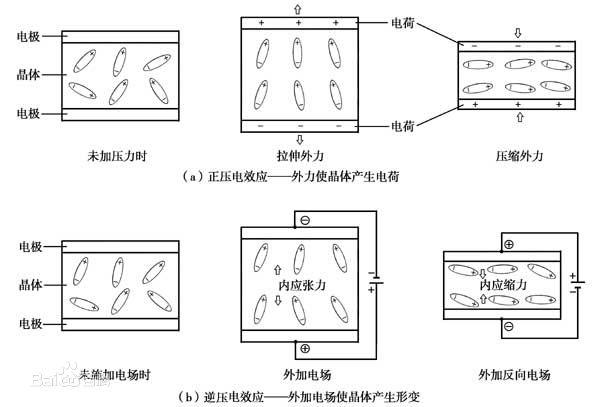BaTiO3基压电陶瓷界面改性研究毕业论文
2020-02-14 20:43:18
摘 要
近年来,无铅压电陶瓷因为其环境友好,受到广泛关注。虽然目前市场主流仍为铅基压电陶瓷,比如PZT压电陶瓷,但是相较于PZT陶瓷在烧结过程中挥发有毒物质,同时发生组分分离,无铅压电陶瓷更能满足当今社会对于环境保护的需求。因此,开发高性能的无铅压电陶瓷来全面代替成为当前社会发展的主流趋势。
本课题以钛酸钡陶瓷为基础,通过向钛酸钡陶瓷中掺入其他物质,来提高陶瓷的压电性能。研究掺入其他物质的钛酸钡陶瓷的压电性能的变化及其物理机制;研究在不同温度场或者不同电压场下,其结构与性能的变化特性及显微结构对陶瓷的压电性能提升的深层次原因。
该论文主要研究的内容有:
- 阅读相关文献,了解BaTiO3压电陶瓷的发展历史以及前景;
- 学习传统固相法制备BaTiO3压电陶瓷的工艺流程,并且通过Li掺杂研究BaTiO3陶瓷的温度稳定性,压电性能,铁电性能,介电性能的变化规律;以及探究陶瓷的微观形貌和电性能之间的关系。
通过一系列的实验和测试分析,本论文得出以下几个结论:
- 通过测定不同含量的Li掺杂BaTiO3陶瓷在不同烧结温度下的体积密度,发现其在1380℃时致密度最佳,此温度为该体系的最佳烧结温度。
- 通过检测其相结构和微观结构,发现Li的掺入使得陶瓷的晶粒尺寸发生变化,改变其致密度和均匀性,其中Li含量为1.0%时致密度和均匀性最好,而且Li的掺入并未改变BaTiO3陶瓷的相结构,仍为典型的四方相结构。
- 随着Li的掺入,BaTiO3陶瓷的压电性能和介电性能得到改善,在Li含量为1.0%时,其压电性能最好;Li含量为1.5%时,介电性能改善最为明显。同时,Li的掺入使得BaTiO3陶瓷整体的温度稳定性有着很大的提高。
关键词:压电陶瓷;压电性能;致密度;介电常数
Abstract
In recent years, lead-free piezoelectric ceramics have received widespread attention because of their environmental friendliness. Although the mainstream of the market is still lead-based piezoelectric ceramics, such as PZT piezoelectric ceramics, lead-free piezoelectric ceramics can better meet the needs of today#39;s society, compared with PZT ceramics, which volatilize toxic substances during sintering and combine component separation. The need for protection. Therefore, the development of high-performance lead-free piezoelectric ceramics has completely replaced the mainstream trend of current social development.
Based on the barium titanate ceramics, this topic improves the piezoelectric properties of ceramics by incorporating other substances into the barium titanate ceramics. Study the change of piezoelectric properties and physical mechanism of barium titanate ceramics doped with other substances;The changes in structure and properties and the piezoelectric properties of ceramics under different temperature fields or different voltage fields were investigated. The deeper reasons for improvement.
The main research contents of this paper are:
1. Read the relevant literature to understand the history and prospects of BaTiO3 piezoelectric ceramics;
2. Study the process of preparing BaTiO3 piezoelectric ceramics by traditional solid phase method, and study the temperature stability, piezoelectric properties, ferroelectric properties and dielectric properties of BaTiO3 ceramics by Li doping; and explore the microscopic shape of ceramics. The relationship between appearance and electrical performance.
Through a series of experiments and test analysis, this paper draws the following conclusions:
1. By measuring the bulk density of different content of Li-doped BaTiO3 ceramics at different sintering temperatures, it is found that the density is optimal at 1380 °C, which is the optimum sintering temperature.
2. By detecting its phase structure and microstructure, it is found that the incorporation of Li changes the grain size and changes its density and uniformity. The Li content is 1.0%, the density and uniformity are the best, and the Li is mixed. The phase structure of the BaTiO3 ceramics is not changed, and is still a typical tetragonal phase structure.
3. With the incorporation of Li, the piezoelectric properties and dielectric properties of BaTiO3 ceramics are improved. When the Li content is 1.0%, the piezoelectric properties are the best. When the Li content is 1.5%, the dielectric properties are most obviously improved. . At the same time, the incorporation of Li makes the overall temperature stability of BaTiO3 ceramics greatly improved.
Key words: piezoelectric ceramics; piezoelectric properties; density; dielectric constant
目 录
摘 要 I
Abstract II
第1章 绪论 1
1.1压电陶瓷的发展 1
1.2 压电陶瓷的主要参数性能 1
1.2.1压电陶瓷的概述 1
1.2.2 压电陶瓷的主要参数性能 2
1.3 钛酸钡压电陶瓷 3
1.3.1钛酸钡材料机理 3
1.3.2钛酸钡陶瓷特点及应用 4
1.4 课题研究的目的意义及内容 5
1.4.1 对BaTiO3陶瓷改性的目的和意义 5
1.4.2 研究内容 5
第2章 实验流程及表征测试方法 6
2.1 实验设备与原料 6
2.2制备工艺 6
2.3 表征测试方法 7
2.3.1物相结构分析(XRD) 8
2.3.2体积密度 8
2.3.3 显微结构测试 8
2.3.4 压电常数d33测试 8
2.3.5机电耦合系数kp与机械品质因数Qm测试 9
2.3.6介电性能测试 9
2.3.7铁电性能测试 10
第3章 Li掺杂钛酸钡压电陶瓷的结构与性能 11
3.1 Li掺杂BaTiO3压电陶瓷的制备 11
3.2 Li掺杂BaTiO3压电陶瓷的体积密度 11
3.3 Li掺杂BaTiO3压电陶瓷的物相结构分析 12
3.4 Li掺杂BaTiO3陶瓷的显微结构 13
3.5 Li掺杂BaTiO3压电陶瓷的电学性能 14
3.5.1 Li掺杂BaTiO3陶瓷的压电性能 14
3.5.2 Li掺杂BaTiO3压电陶瓷的介电性能 16
3.5.3 Li掺杂BaTiO3压电陶瓷的铁电性能 19
3.6 本章小结 19
第4章 结论 21
参考文献 22
致 谢 24
第1章 绪论
1.1压电陶瓷的发展
压电陶瓷是将电学性能和机械能相互转化的功能陶瓷材料,通过压电效应来反映其性能的高低。压电效应最早在1880年由居里兄弟发现,之后在1881年他们又发现了逆压电效应并给出石英的正逆压电常数。在第二次世界大战中BaTiO3压电陶瓷被发现,此后压电陶瓷迎来了划时代的发展。1947年,美国的Roberts通过对BaTiO3进行高压极化处理获得了压电陶瓷的电压性,之后日本开始全面研究BaTiO3陶瓷,并制造出了压力传感器、谐振器、高频换能器、超声换能器、滤波器等各种与之相关的压电器件。直到50年代中期,随着PZT压电陶瓷的问世,铅基压电材料成为市场上主流压电陶瓷。
1.2 压电陶瓷的主要参数性能
1.2.1压电陶瓷的概述
压电陶瓷是一种将电学性能和机械能相互转化的压电材料。压电性同时包括了正压电性和逆压电性。正压电性指受到机械外力的作用时,电介质内部的正负电荷出现相对位移引起极化,导致介质两端出现电性相反的束缚电荷。其电荷密度与外力遵循下列正比关系:
delta;=dT
其中,delta;为电荷密度,d为压电常数,T为伸缩应力。
给电介质加上外电场时,介质内部正负电荷不仅出现相对位移而极化,同时会因为此位移引起电介质形变,这种效应称为逆压电效应。其应变与外加电场遵循以下线性关系:
x=dtEs
其中,x为应变,dt为压电应变常数,Es为外加电场。
压电效应一般只会存在于非对称性晶体里面,因为压电性能的本质就是压电体在外力作用下发生形变而产生极化,如果晶体是对称的,在施加外力后晶体内部正负电荷仍然重合,不能发生极化,不具备压电性能。

图1-1 压电效应示意图
Fig. 1-1 schematic diagram of piezoelectric effect
1.2.2 压电陶瓷的主要参数性能
压电陶瓷的性能表征主要包括压电常数和机电耦合系数这些参数以外,还有许多重要性能参数,如介电常数、居里温度、机械品质因子等。
(1)压电常数
压电常数反映的是材料的机械性能与电性能之间的耦合作用。当沿着陶瓷的极化方向施加压力T3时,会在电极表面A3上产生一定的电荷,其密度为sigma;3 = d33T3。在MKSQ制中,电位移D3 =sigma;3,则
D3 = d33T3
其中,D3为电位移,d33为压电常数,T3为应力,“33”表示极化方向和应力方向相同。
同理,沿X轴和Y轴分别施加应力T1和T2,在电极面A3上所产生的电位移为:D3 = d31T1,D3= d32T2。若晶体同时受到T1,T2和T3的作用,电位移应力关系为:
D3 = d31T1 d32T2 d33T3
(2)机电耦合系数kp和机械品质因子Qm
压电振子在振动的过程中,会使机械能和电性能发生相互转化,其转化程度可以用机电耦合系数来表示,符号为kp
kp=
或者:
kp=
压电材料在极化时会克服内摩擦消耗能量,用机械品质因子Qm来表示,其表达式为:

其中△f=fa-fr,fa、fr为谐振和反谐振频率,R、C分别为LC串联电路的电阻和电容。
(3)介电常数
介质在外加电场下会产生感应电荷从而使电场遭到削弱,真空中的外加电场与介质中的电场的比值就是介电常数。用εr表示。

其中,Cp为电容(F),d为电极之间的距离(m),r为陶瓷圆片上电极的半径(m),ε0是常数8.85times;10-12(F/m)。
(4)介电损耗
在交流电的作用下电解质在单位时间内因发热消耗的电能,称之为介电损耗,用tandelta;表示。
1.3 钛酸钡压电陶瓷
钛酸钡陶瓷是其中钛酸钡或其固溶体是主相的陶瓷。它具有ABO3钙钛矿结构,是一种典型的四方相结构压电材料,分子式为BaTiO3。以 BaCO3、TiO2为主要原料合成,在1300~1400℃进行烧结而成;或者,通过化学方法制备的高纯度超细钛酸钡粉末在模塑后直接烧制。它具有人工高压极化的压电性,其机电耦合系数(kp)为0.36,品质因数(Qm)为300。压电常数 d31和 d33分别达-80times;10-12 C/ N和190times;10-12 C/ N,居里温度120℃,用于制作压电器件。可以通过添加峰移位剂或峰化剂来进行改性。钛酸钡半导体陶瓷可以通过强制还原法或施主掺杂法制备铁电电容器来制备,正温度系数(PTC)热敏元件,表面层电容器和各种压电器件。
1.3.1钛酸钡材料机理
您可能感兴趣的文章
- 改善锂离子电池中硅基负极存储性能的策略研究外文翻译资料
- 通过添加压电材料BaTiO3提高大功率锂离子电池的微米级SiO @ C/CNTs负极的电化学性能外文翻译资料
- Pd和GDC共浸渍的LSCM阴极在固体氧化物电解池高温电解CO2中的应用外文翻译资料
- 利用同步回旋加速器粉末衍射的方法来研究在有其他物相的情况下C4AF的水化作用外文翻译资料
- 外国循环流化床锅炉发展现状外文翻译资料
- 含石蜡基复合材料的多壁碳纳米管的热性能外文翻译资料
- 矸石电厂炉渣机制砂的应用研究外文翻译资料
- 机动车螺旋弹簧的失效分析外文翻译资料
- 从废阴极射线管和锗尾矿制备高强度玻璃泡沫陶瓷外文翻译资料
- 作为导热液体的液态金属在太阳能储热中的应用外文翻译资料




